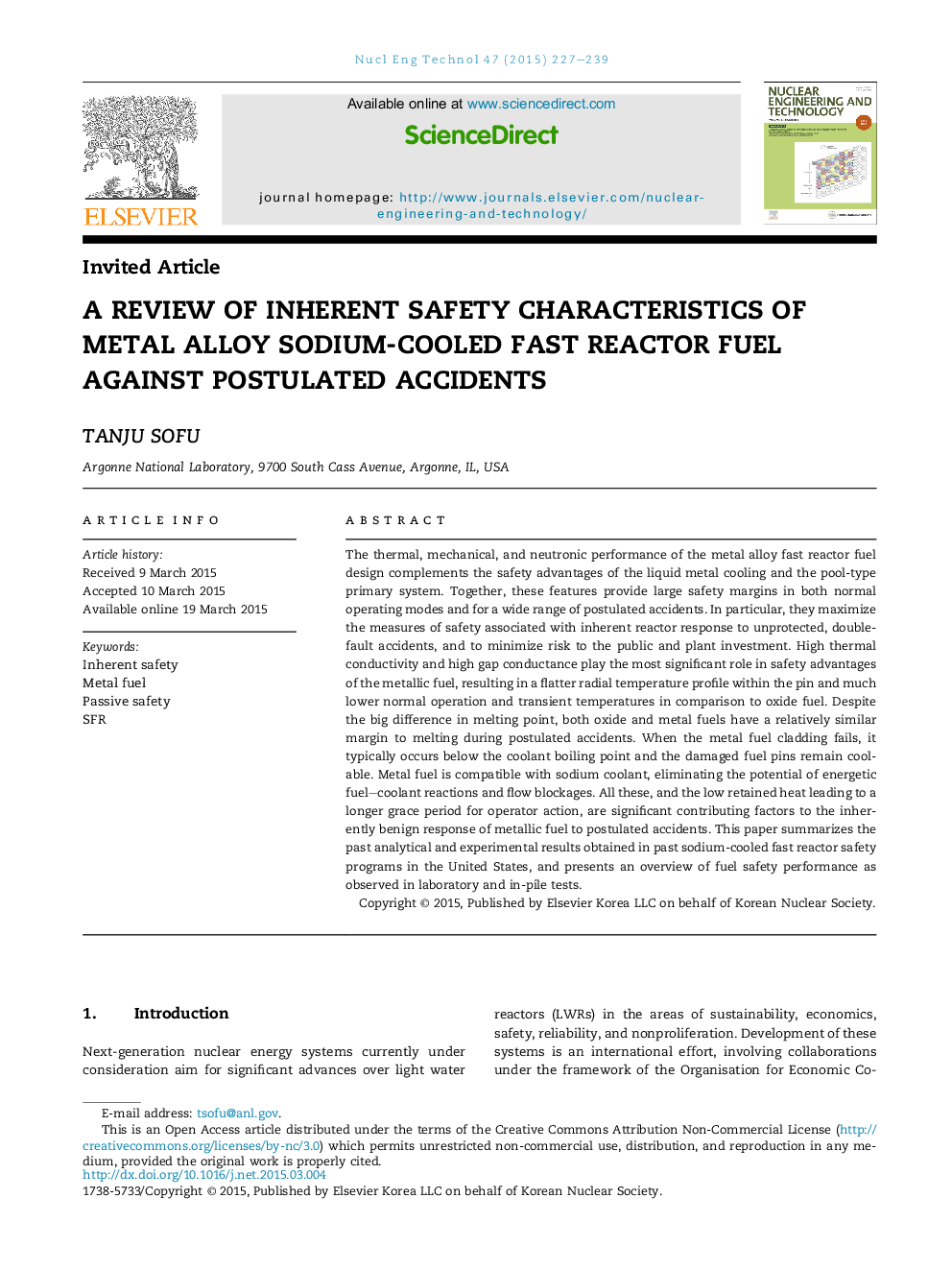| کد مقاله | کد نشریه | سال انتشار | مقاله انگلیسی | نسخه تمام متن |
|---|---|---|---|---|
| 1740156 | 1017327 | 2015 | 13 صفحه PDF | دانلود رایگان |
The thermal, mechanical, and neutronic performance of the metal alloy fast reactor fuel design complements the safety advantages of the liquid metal cooling and the pool-type primary system. Together, these features provide large safety margins in both normal operating modes and for a wide range of postulated accidents. In particular, they maximize the measures of safety associated with inherent reactor response to unprotected, double-fault accidents, and to minimize risk to the public and plant investment. High thermal conductivity and high gap conductance play the most significant role in safety advantages of the metallic fuel, resulting in a flatter radial temperature profile within the pin and much lower normal operation and transient temperatures in comparison to oxide fuel. Despite the big difference in melting point, both oxide and metal fuels have a relatively similar margin to melting during postulated accidents. When the metal fuel cladding fails, it typically occurs below the coolant boiling point and the damaged fuel pins remain coolable. Metal fuel is compatible with sodium coolant, eliminating the potential of energetic fuel–coolant reactions and flow blockages. All these, and the low retained heat leading to a longer grace period for operator action, are significant contributing factors to the inherently benign response of metallic fuel to postulated accidents. This paper summarizes the past analytical and experimental results obtained in past sodium-cooled fast reactor safety programs in the United States, and presents an overview of fuel safety performance as observed in laboratory and in-pile tests.
Journal: Nuclear Engineering and Technology - Volume 47, Issue 3, April 2015, Pages 227–239
